Einleitung
Du hast viele Vorteile davon, wenn du ein zweites Laufwerk in deinen iMac einbaust, z.B. höhere Geschwindigkeit, mehr Speicherplatz und weniger Aufregung bei der Installation neuer Software. Hier wird gezeigt, wie du anstelle des optischen Laufwerks ein zweites Laufwerk einbauen kannst.
Werkzeuge
Ersatzteile
-
-
Lege den iMac mit der Vorderseite nach unten auf einen Tisch, so dass die Unterkante zu dir zeigt.
-
Löse die einzelne Kreuzschlitzschraube in der Mitte der Abdeckung.
-
Entferne die Abdeckung vom iMac.
-
-
-
Entferne folgende zwölf Torx Schrauben, welche die Frontblende am Rückgehäuse befestigen:
-
Acht 13 mm T8 Schrauben
-
Vier 25 mm T8 Schrauben
-
-
-
Hebe die Frontblende vorsichtig vom oberen Rand her aus dem Gehäuse.
-
Wenn der obere Rand frei ist, kannst du die Frontblende zum Fuß hin kippen und aus dem Gehäuse heben.
-
Drehe die Frobtblende weg vom restlichen Gerät und lege sie über die Oberkante des iMac.
-
-
-
Entferne die beiden 5,3 mm Torx T6 Schrauben vom LCD Stecker.
-
Greife fest die Zuglasche oben am Stecker und ziehe ihn gerade aus seinem Anschluss.
-
-
-
Fasse die Unterkante des Displays an beiden Seiten mit den Händen an und hebe es soweit hoch, das du an die Stecker gelangst.
-
Halte das Display mit einer Hand hoch; lokalisiere und löse das Kabel des Display-Thermosensors aus seinem Stecker.
-
-
-
Halte das Display weiter hoch und drücke den Stecker des Stromversorgungskabels fest mit zwei Fingern nach unten aus seinem Sockel.
-
-
-
Löse das Klebeband ab, welches das optische Laufwerk festhält.
-
Entferne die beiden 7,1 mm Torx T10 Schrauben.
-
-
-
Fasse den Stecker des optischen Laufwerks fest an und ziehe ihn gerade vom optischen Laufwerk ab.
-
Entferne das optische Laufwerk vom Gerät.
-
-
-
Um den Thermosensor des optischen Laufwerks zu entfernen, musst du erst den mittleren Finger der Halterung am Thermosensor mit der Spudgerspitze hochheben und dann das Kabel zu ihm etwas anspannen.
-
-
-
Hebele die Halterung des Thermosensors vom optischen Laufwerk mit dem flachen Ende des Spudgers aus der Klebeverbindung zum optischen Laufwerk.
-
-
-
Entferne mit einem Spudger das kleine Stückchen EMI Schaumstoff unten am optischen Laufwerk.
-
-
-
Entferne die beiden Torx T10 Schrauben auf jeder Seite des optischen Laufwerks, also insgesamt vier.
-
-
-
Drücke die Halterasten des optischen Laufwerks mit der Spudgerspitze aus ihren Löchern unten am Laufwerk.
-
-
-
Drehe die Halterung des optischen Laufwerks etwas weg vom optischen Laufwerk.
-
Ziehe die Halterung des optischen Laufwerks vom offenen Ende des optischen Laufwerks weg, achte darauf, dass sich keine Laschen verfangen.
-
-
-
Entferne die drei 3,0 mm Kreuzschlitz #0 Schrauben aus dem Gehäuse des optischen Laufwerks.
-
-
-
Öffne das Gehäuse, indem du von der linken Kante ausgehend vorsichtig ziehst.
-
Ziehe weiter an den beiden Gehäusehälften, bis sie sich trennen.
-
-
-
Entferne die beiden 3,0 mm Kreuzschlitz #0 Schrauben, mit welchen die Frontblende am Gehäuse des optischen Laufwerks befestigt ist.
-
-
-
Hebe die schwarze Kunststoff-Frontplatte aus dem Gehäuse der Optical Bay.
-
Baue das Gehäuse des optischen Laufwerks ohne die Frontplatte unter Verwendung der drei originalen 3,0 mm Kreuzschlitz Schrauben wieder zusammen.
-
-
-
Entferne den Abstandshalter aus Kunststoff vom Gehäuse des optischen Laufwerks, indem du einen der Clips auf beiden Seiten eindrückst und ihn dann nach oben aus dem Gehäuse heraushebst.
-
-
-
Stelle sicher, dass die Anschlüsse nach unten zeigen, bevor die Festplatte in das Gehäuse eingesetzt wird.
-
Lege die Festplatte vorsichtig in das Gehäuse.
-
Während eine Hand das Gehäuse an Ort und Stelle hält, drücke mit der anderen Hand die Festplatte an die Anschlüsse im Gehäuse.
-
-
-
Sobald die Festplatte fest sitzt. kannst du den Abstandshalter aus Kunststoff wieder einsetzen. Drücke dabei die Festplatte gegen die Unterseite des Gehäuses.
-
Schließe alle Kabel, die du vom ursprünglichen Laufwerk entfernt hattest, am optischen Laufwerk an.
-
Um dein Gerät wieder zusammenzusetzen, folge den Schritten in umgekehrter Reihenfolge.
3 Kommentare
Many many many thanks, everything went fine with my iMac early 2009 which is now ready for a second life with my kids :)
Mystery: I have removed and replaced my bezel many times - most recently to repair the vid card. However this time while powering up fine before replacing the bezel - now, once bezel is in place it won’t power on - but I hear a ‘click’ in the lower right corner after pushing the power. But then, if I pull the bezel back about an inch from the top - it starts >Something seems to be ‘shorting’ ?
Many thanks Brittany and ifixit, no problems encountered and it took me about 2 hours only because I checked and double checked everything I did. iMac early 2009, saved it from the scrap heap for a while longer.
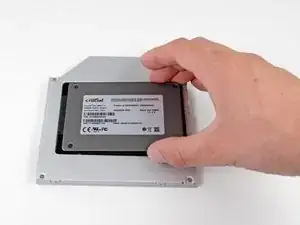
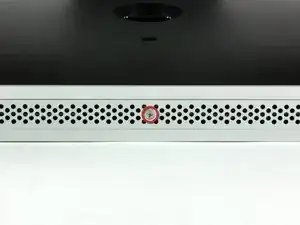
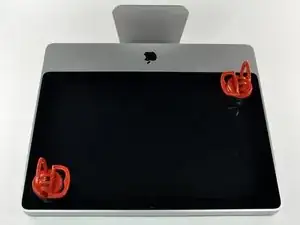
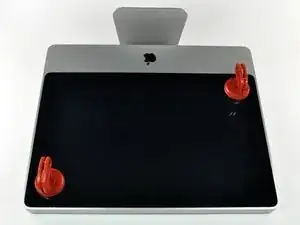
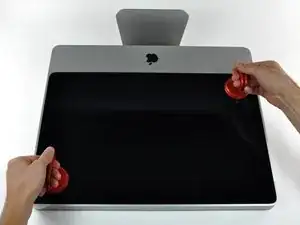
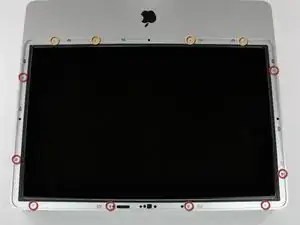
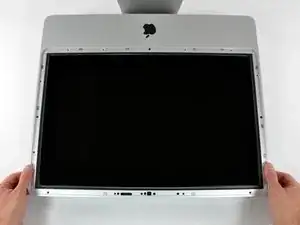
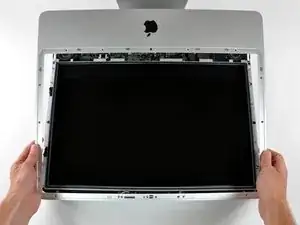
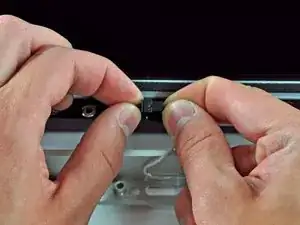
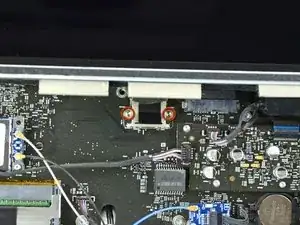
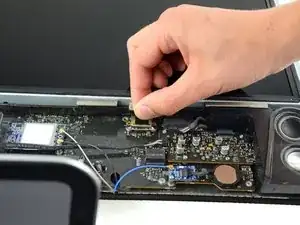
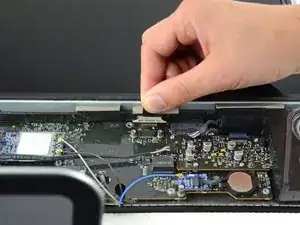
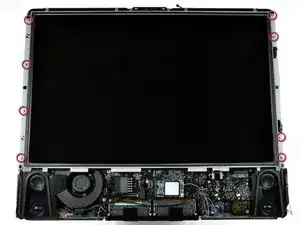
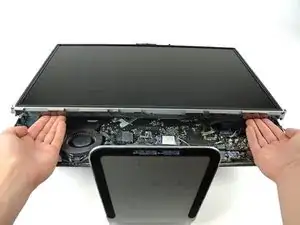
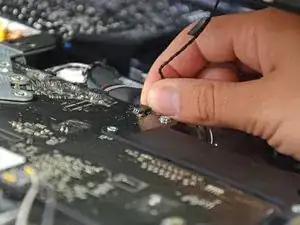
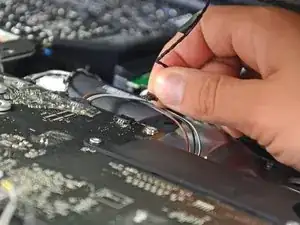
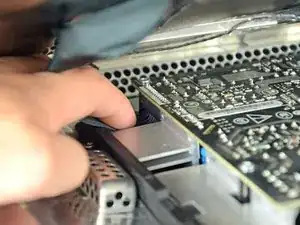
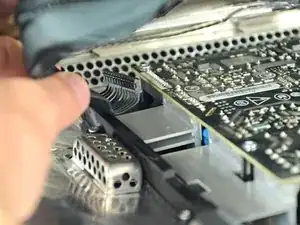
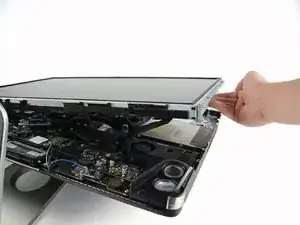
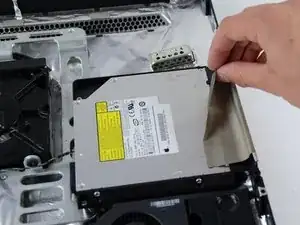
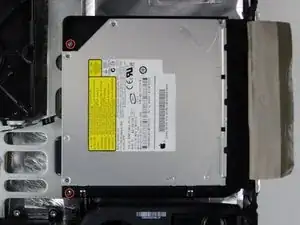
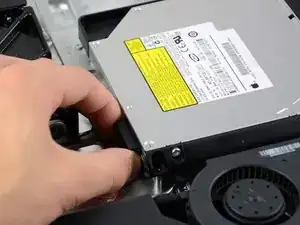
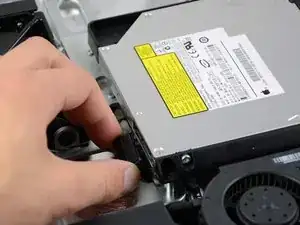
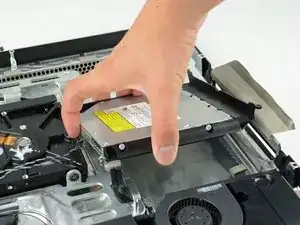
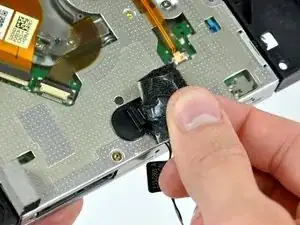
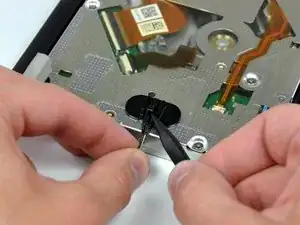
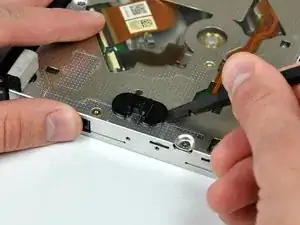
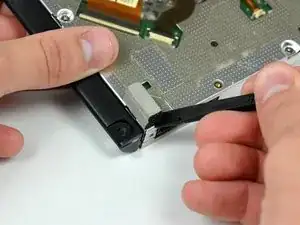
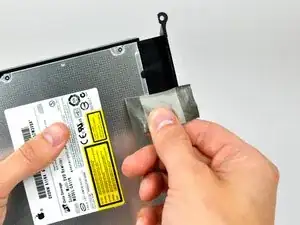
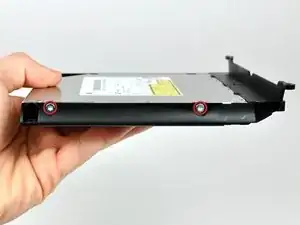
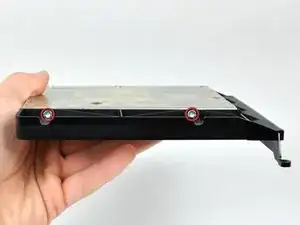
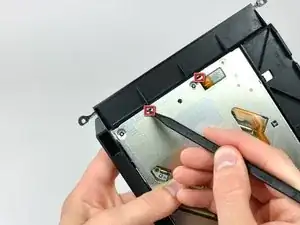
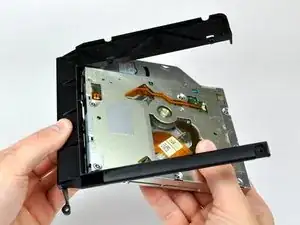
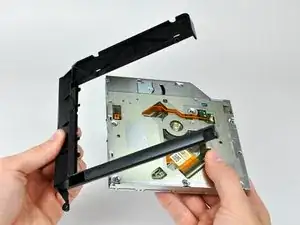
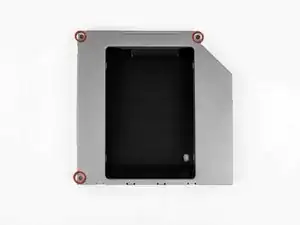
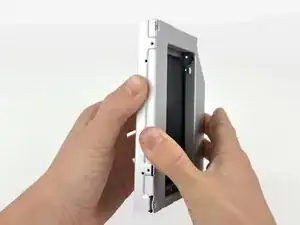
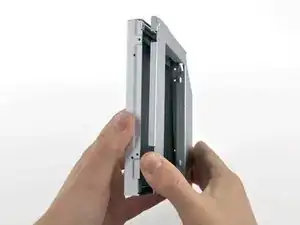
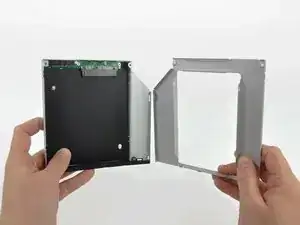
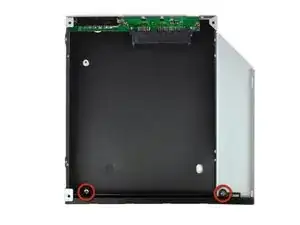
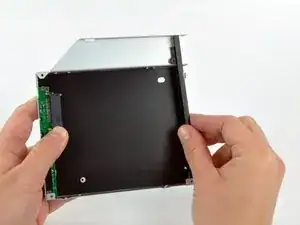
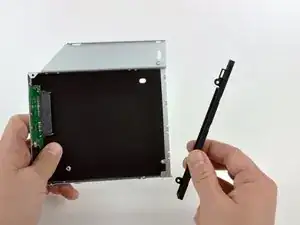
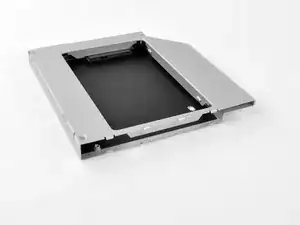
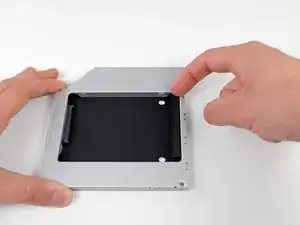
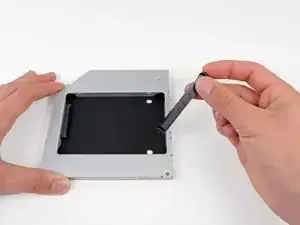
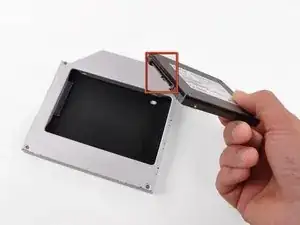
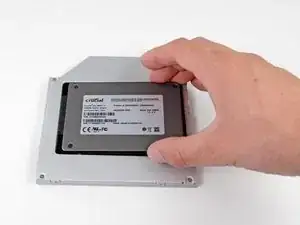
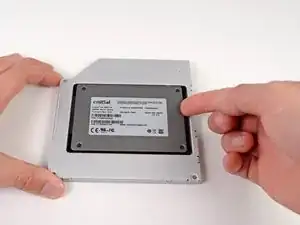
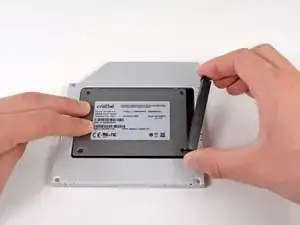
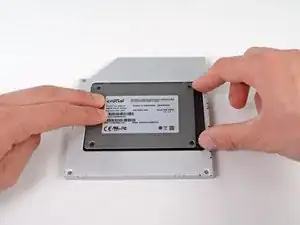

The grid won't fall off by itself. You'll have to help it. Use the smallest screwdriver you have; the Torx 6 worked fine for me. It should enter in one of the many holes composing the grid. Use it as a lever to ploy the grid a little bit. You may catch it with your fingers and that's it.
Be carefull not to damage the hole by a too strong leverage.
Laurent -
much more safer to use duct tape, instead of torx 6. (glue it along the length of the grid and pull). it will loose instantly and smooth;)
Hofmann78rus -
Anyone know a guide to replace the plastic piece this screw connects to? I accidentally forgot this step - went to remove the front bezel and bent the plastic piece the access door connects to.
Jason Augustin -